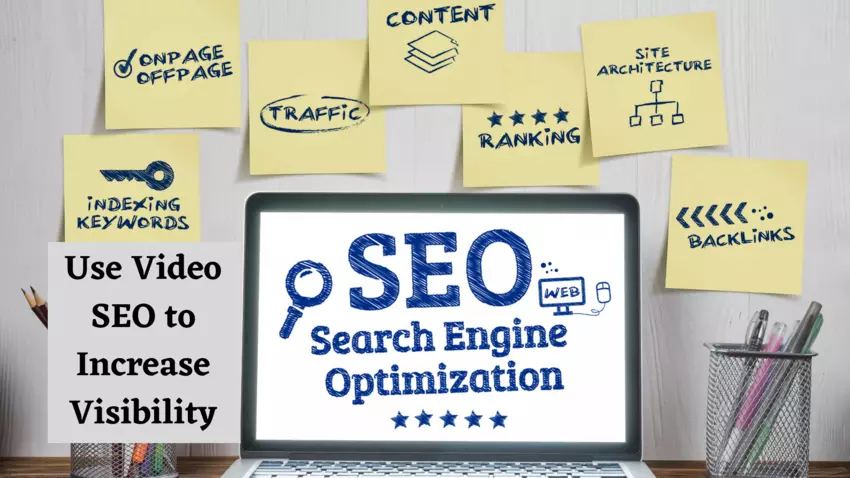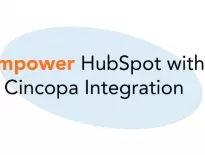Optimized video content can make a significant difference in your SEO strategy.

Video has long established itself as one of the most valuable types of media for content marketing. SEO professionals know that video can make or break your optimization efforts.
The research shows that video has a clear advantage. Video is fifty times more likely to earn organic ranking on Google than plain text results. Posts with video attract three times more inbound links. The list goes on.
Google isn’t favoring websites with video content on accident. The search engine giant simply understands that users find the greatest value in video content. It’s no surprise that web pages with high-quality videos rank better than those without.
SEO Video Marketing: Boost Your Organic Traffic
In order to make the most of your video marketing strategy, we need to start with a fundamental understanding of how SEO video content works. Once you know what Google is looking for when it assigns ranking value to web pages, you can begin optimizing your own content to fit the search engine’s expectations.
Google uses more than 200 factors to assign ranking value to websites according to user search queries. This is public, well-known information. What those factors are and how they fit together is a bit less clear.
This is because Google hasn’t provided website owners or marketers with a list detailing exactly what it thinks a good website should look like. Instead, marketers have to research, perform tests, and occasionally reverse-engineer Google technology in order to figure it out. That is what makes comprehensive website SEO services even more complicated.
How to Decrease Bounce Rate with Video
Some of these insights are incredibly revealing. For example, Google does not directly assign higher ranking to websites with videos just because they have videos. It’s not that simple.
Instead, websites with high-quality video content earn better rankings indirectly. They perform better because they encourage user interaction, which is something Google measures directly.
The impact of video content on bounce rate is an excellent example of this. When a user clicks on a link from Google, visits a web page, and then immediately clicks back to the Google search results page, it indicates they didn’t find what they were looking for on that page. That action is called a bounce.
For example, explainer videos can reduce your web page bounce rate by 34%. Video has the power to immediately grab a user’s attention, draw them into your brand, and demonstrate the value of your product or service.
Explainer videos achieve all these goals faster and more effectively than simple text. This is especially true for landing pages, where you may only have a few seconds to validate your web page visitors’ click before they leave.
This is especially true for educators, tech companies, and organizations that sell sophisticated products or services. If leads won’t consider buying your product until you’ve explained how it works to them, you need to make sure that explanation is as accessible as possible.
How Embedding a YouTube Video Impacts Website and Landing Page Performance
There are two general ways to make video content accessible to web page users. You can either upload the video directly, or embed it onto the web page.
- Uploading means your website host will hold the entire video file and send it to each web page visitors’ device. This will use up your bandwidth and demand high-performance hosting resources.
- Embedding means putting a frame on your web page that plays the video, while the video itself is hosted in another place. This lets you reduce the amount of resources you need to make available to users, while improving the speed and efficiency of your hosting service.
The practical benefit of this approach is that your website will load faster, rank better, and offer an improved user experience. One of Google’s Core Web Vitals is called Largest Contentful Paint – which refers to the time it takes for your web page to deliver its largest media file to visitors. If your video takes too long to load, your entire site’s SEO performance will suffer.
If you upload all of your videos, you will have to invest a great deal in hosting equipment to make those videos load and play quickly. If you don’t, you won’t be able to achieve SEO video success very easily.
This is why digital marketers recommend embedding videos whenever possible. Relying on purpose-built video servers (provided by your video host) is much more cost-efficient than building your own server infrastructure from the ground up.
Faster Page Loading Time is Essential to Increase Visibility on Google Search
Page loading time is one of the most important factors that Google takes into consideration when assigning ranking value to web pages. Web pages that take more than a few seconds to load are frustrating for users, and Google doesn’t want to funnel traffic to frustrating websites.
According to Google itself, increasing page load time from one second to three seconds results in a 32% percent increase in bounce rate. That figure jumps up to 106% for web pages that make users wait more than six seconds before fully loading.
If your hosting service provides you with video optimizer capabilities, you can use them to improve your website’s ranking significantly. A high-quality digital asset management (DAM) solution like Cincopa can play an important role in your video optimization strategy.
Remember: Always Embed Videos, Don’t Upload Them
Embedding videos helps you improve page load times, and consequently reduce bounce rates. The better equipped your video content hosting provider is, the faster your pages will load. Choosing a video hosting service that enables fast, efficient embedding is a key step forward in your SEO video content strategy.
These are just some of the ways that video improves SEO. Now we’re going to cover how you can improve your videos to maximize the value of these interactions. Many of these gains depend on the fact that video increases user engagement and interactivity on the website itself.
Three Steps to Use Video SEO Optimization to Improve Your Ranking
Google has developed sophisticated algorithms for measuring and comparing user interest for web pages it links to. Marketers who pay attention to the way video can help improve user interaction can earn much higher rankings by showing the right videos to the right users at the right time.
1. Add meta tags and descriptions to your video content.
Adding meta tags and descriptions to your video content is critical to enduring SEO success because search engine crawlers cannot watch videos. In order for Google’s crawler bot to understand the value your video represents, you need to tell it through accurate meta tags and description content.
2. Use interactive forms and Calls-to-action s in your videos
Interactive forms and CTAs help improve engagement by directly addressing some of the metrics that Google crawlers measure. Not only do these functions help reduce bounce rates, but they also give website owners better ways to monetize content and boost conversions.
3. Add subtitles to your videos
Subtitles are an incredibly important aspect of mobile-friendly video optimization. 83% of mobile users in the United States watch video content with the sound off. If your video isn’t catching users’ attention from the moment they visit your website, you may need to bridge the gap between your content and its mobile viewers using well-written subtitles.
Cincopa’s Powerful Video SEO Solution
Cincopa is a fully-featured video hosting solution that gives digital marketers all the tools they need to deploy advanced video SEO optimization techniques. Start embedding video content through our powerful, secure DAM solution, and analyze visitor engagement to improve your content marketing campaign over time.








